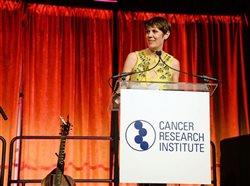
How our own bodies may be the key to fighting cancer
(BPT) – In August 2015, former President Jimmy Carter shared some very sad news with the world when he revealed he had been diagnosed with melanoma, and that the disease had already spread to other parts of his body.
But then, something incredible happened. Just months after his announcement, Carter declared himself “cancer free.” A few months later, the former president indicated he no longer needed treatment for his disease. How could this happen? One scientific explanation is that he received immunotherapy — a new type of treatment that is changing the lives of many people diagnosed with cancer.
The idea behind immunotherapy is relatively simple — get your body to fight cancer the way it was meant to by empowering and enhancing your immune system. Although immunotherapy has been in the making for more than a century, today’s major advances are leading to miraculous stories like Carter’s.
Immunotherapy: A family’s quest to advance cancer care
In the early 1890s, Dr. William Coley, a prominent surgeon who specialized in cancer and practiced medicine in New York between 1890 and 1936, started noticing seemingly spontaneous remission in patients with cancer who contracted certain bacterial infections. Inspired by his observations, Coley began to explore a daring new idea by injecting live bacteria into a patient with an inoperable malignant tumor. The patient made a complete recovery and lived another 26 years before ultimately passing away from a heart attack. Reassured by this case, Dr. Coley then developed a safe and effective mixture of bacteria to treat patients with cancer — known as Coley’s mixed bacterial toxins (or Coley’s toxins). Little was known of immunology in Coley’s day, but today it is understood that the immune system’s response to the bacteria is likely to have been what triggered his patients’ responses against cancer.
Unfortunately, Coley’s findings were overshadowed by the advent of X-ray, radium treatment and chemotherapy. After his death, Coley’s daughter, Helen Coley Nauts, became inspired by her father’s work and was able to track down hundreds of cases of microscopically confirmed cancers that had been treated with Coley’s toxins. After more than three years of research, Nauts published her findings and demonstrated the truly beneficial effects of her father’s treatment, rekindling the medical community’s interest in immunotherapy.
With a grant of $2,000 from Nelson Rockefeller, Nauts and her long-time friend, Oliver R. Grace, founded the Cancer Research Institute (CRI) in 1953. Today, nearly every major research institution in the world working in immunology and immunotherapy has scientists on staff who have been, or are currently being funded by CRI.
The road ahead: A cancer “moonshot”
It is easy to call immunotherapy a miracle — and it may be in some regards — but it is also important to realize that this revolutionary new way of treating cancer is actually the result of years of research and dedication. Recognizing a need for continued funding and research to advance cancer care, Vice President Joe Biden launched the National Cancer Moonshot — an initiative dedicated to accelerating research through increased collaboration between patient advocacy groups, health care providers, and many other stakeholders in the field, like CRI.
“Vice President Biden’s Moonshot initiative is an exciting proposal for patients living with cancer and the immunotherapy researchers all over the world who are working day and night to discover and develop newer, safer ways to treat this disease,” says Dr. Jill O’Donnell-Tormey, chief executive officer and director of scientific affairs at the Cancer Research Institute. “We at CRI were thrilled to be invited by the Vice President’s team to participate in early discussions regarding the initiative and look forward to continuing our role as an expert resource in the field of cancer immunotherapy.”
To learn more about cancer immunotherapy, visit the Cancer Research Institute website at http://www.cancerresearch.org/.


